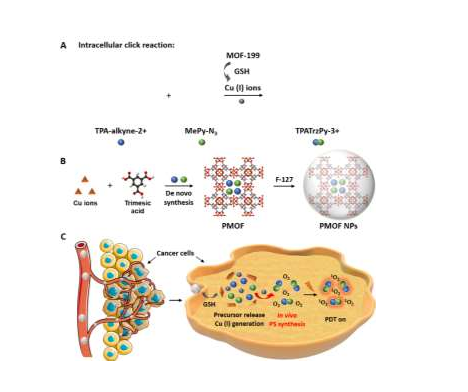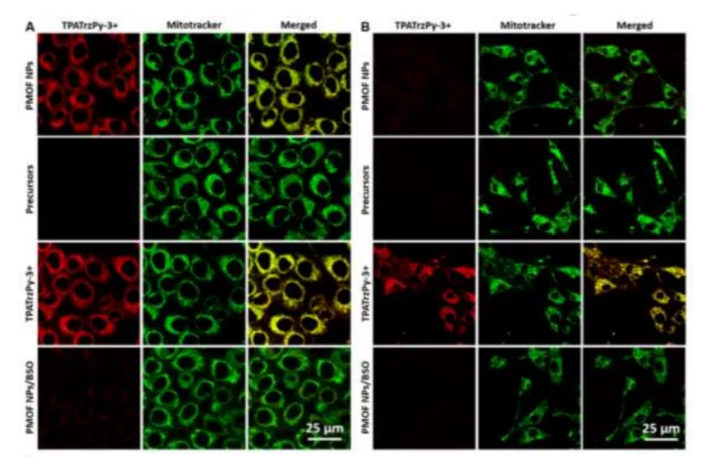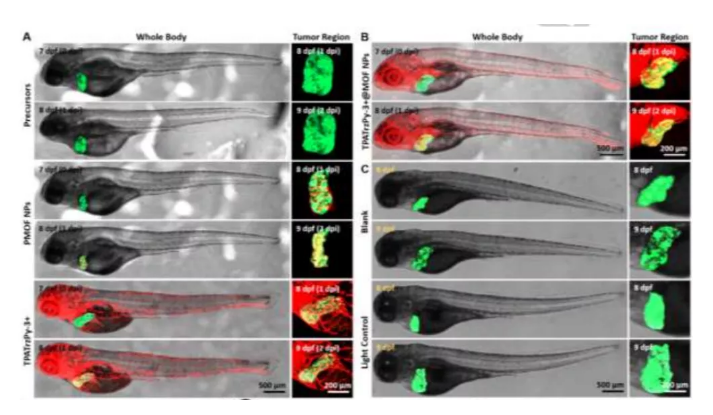Liu Bin Angew: In situ synthesis of mitochondrial targeted AIE photosensitizer activated by tumor cells for photodynamic therapy
Minimizing the adverse effects on normal tissues is one of the necessary conditions for effective anti-cancer photodynamic therapy (PDT), which requires the realization of photosensitizers (PSs) specific to cancer cells or even cancer cell organelles both in vivo and in vitro. ) Synthesis or delivery, but this is currently difficult to achieve.
Hereby, Professor Bin Liu from the National University of Singapore reported a strategy for the activation of cancer cells to synthesize PSs, and used this strategy to construct a highly efficient mitochondrial targeted photosensitizer with aggregation-induced luminescence (AIE) performance and use it as a A PDT reagent guided by imaging in cancer cells.

Key points of this article:
(1) MOF-199 is a Cu(II)-based metal-organic framework, which can be used as an inert carrier to support PSs precursors for efficient delivery. At the same time, it can also be used as a raw material for Cu(I) catalysts, which can then be used for in-situ click reactions to form PSs in cancer cells.

(2) Studies have shown that PSs synthesized in situ have the ability to target mitochondria, and can effectively achieve specific ablation of tumor cells under light irradiation, and the highly specific PSs produced in cancer cells also make the treatment process safer.

references:
Yuanbo Wang. et al. Cancer-Cell-Activated In-Situ Synthesis of Mitochondria-Targeting AIE Photosensitizer for Precise Photodynamic Therapy. Angewandte Chemie International Edition. 2021
DOI: 10.1002/anie.202017350
https://onlinelibrary.wiley.com/doi/10.1002/anie.202017350
Hereby, Professor Bin Liu from the National University of Singapore reported a strategy for the activation of cancer cells to synthesize PSs, and used this strategy to construct a highly efficient mitochondrial targeted photosensitizer with aggregation-induced luminescence (AIE) performance and use it as a A PDT reagent guided by imaging in cancer cells.

Key points of this article:
(1) MOF-199 is a Cu(II)-based metal-organic framework, which can be used as an inert carrier to support PSs precursors for efficient delivery. At the same time, it can also be used as a raw material for Cu(I) catalysts, which can then be used for in-situ click reactions to form PSs in cancer cells.

(2) Studies have shown that PSs synthesized in situ have the ability to target mitochondria, and can effectively achieve specific ablation of tumor cells under light irradiation, and the highly specific PSs produced in cancer cells also make the treatment process safer.

references:
Yuanbo Wang. et al. Cancer-Cell-Activated In-Situ Synthesis of Mitochondria-Targeting AIE Photosensitizer for Precise Photodynamic Therapy. Angewandte Chemie International Edition. 2021
DOI: 10.1002/anie.202017350
https://onlinelibrary.wiley.com/doi/10.1002/anie.202017350
18915694570
Previous: Lu Lehui Angew, Changc


